Turkeygetpwnd38
WKR
Sous vide steak is like AI art, there is no soul in itSous vide and reverse sear on cast iron. Perfect steak.
Sent from my SM-S901U using Tapatalk
Follow along with the video below to see how to install our site as a web app on your home screen.
Note: This feature may not be available in some browsers.
Sous vide steak is like AI art, there is no soul in itSous vide and reverse sear on cast iron. Perfect steak.
Sent from my SM-S901U using Tapatalk
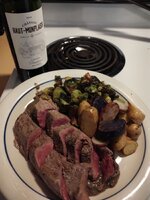
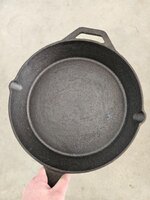
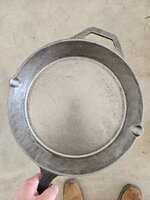
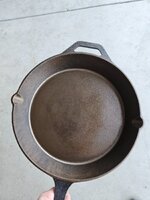
Yep. The only thing with Yeti on it in my gear will be if someone gives it to me.The fact that there are nine pages of discussion about a freaking skillet tells me that we need hunting season here sooner rather than later.
Well put. I've never quite been able to articulate why sous vide was annoying to me. This is it.Sous vide steak is like AI art, there is no soul in it
Sanding and grinding iron with high speed tools can make it so that seasoning is difficult.Reviving this thread in hopes to learn, I recently picked up a no brand yard sale skillet for $5 to throw in the camp trailer. It was rougher than all get out so I ground/sanded it smooth enough for my liking, and did 2 rounds of seasoning with Chosen 100% avocado oil for 1 hour at 450°, letting it cool completely in between seasonings. (For context, this is not the first skillet I've sanded. I have a Lodge that I use daily that I've experimented with avocado, canola, Crisco, lard, tallow, oven, stovetop, you name it, and it exhibits similar issues)
View attachment 917258
View attachment 917259
View attachment 917260
The first cook was sockeye salmon filets, medium heat with oil/butter to get the meat side crispy, then sauteed some onions and garlic, and deglazed it with a bit of broth to turn that into a sauce.
My seasoning on the cooking surface nearly disappeared. It has only a slight bronze hue to it, but mostly looked more like tinted iron as opposed to the deep bronze finish after seasoning. Lodge says on their website they cook their factory seasoning on at way hotter temps than a conventional household oven to carbonize it, not polymerize it as most interweb scientists declare that's what oven seasoning is.
How the hell do I get the seasoning to stay and turn glossy black like the old Wagners I see all over the internet? Does it just take 50 years of use to build that up?
I've read that but I didn't take it past 80 grit on the palm sander so it should have plenty of etching to adhere to. I also don't see how it would be any different than a mill finished skillet like a Yeti or Smithey.Sanding and grinding iron with high speed tools can make it so that seasoning is difficult.
I always get the eye twitch when people talk about Sanding or grinding their iron. I've seen so many pieces ruined by it.
Hopefully you just borrowed it? HahaI have a few friends that bought at $250 and it still doesn’t compare to my grandparents
60 year old skillet that I stole
Seasoning is just taking your fat past its smoke point and holding it thereI've read that but I didn't take it past 80 grit on the palm sander so it should have plenty of etching to adhere to. I also don't see how it would be any different than a mill finished skillet like a Yeti or Smithey.
It's a $5 skillet, I'll keep experimenting and see if I figure anything out. I'm wondering if I'm not cooking it hot enough at 450° in my oven.
I'm in the same boat. Have tried a few of the other "exotic" oils and keep going back to crisco for seasoning. The key is a very light coat IMO. 500 degree oven for an hour then let it cool completely. Then repeat cycle. In my experience anything over 3 cycles of that is probably overkill but two to three is the sweet spot. Then just cook with them.I've seasoned hundreds of pans with crisco. I don't see any need for the fancy 'boutique' types of oils.
You must be single, I ordered a 12pkOrdered 7 thanks for posting
Super light coat. If it's shiny there's too much oilI'm in the same boat. Have tried a few of the other "exotic" oils and keep going back to crisco for seasoning. The key is a very light coat IMO. 500 degree oven for an hour then let it cool completely. Then repeat cycle. In my experience anything over 3 cycles of that is probably overkill but two to three is the sweet spot. Then just cook with them.
I bought the last of the remaining stock. I plan to hoard them all like I do primers and powder and one day they will be worth millions!!! HA- MILLIONS !!!!!!!!You must be single, I ordered a 12pk
Thats about 350.00 over priced. Just picked up a old seasoned Griswold at the flea market for 10 bucks. Best pan ever!Perfect for Father's Day, get your order in quick!
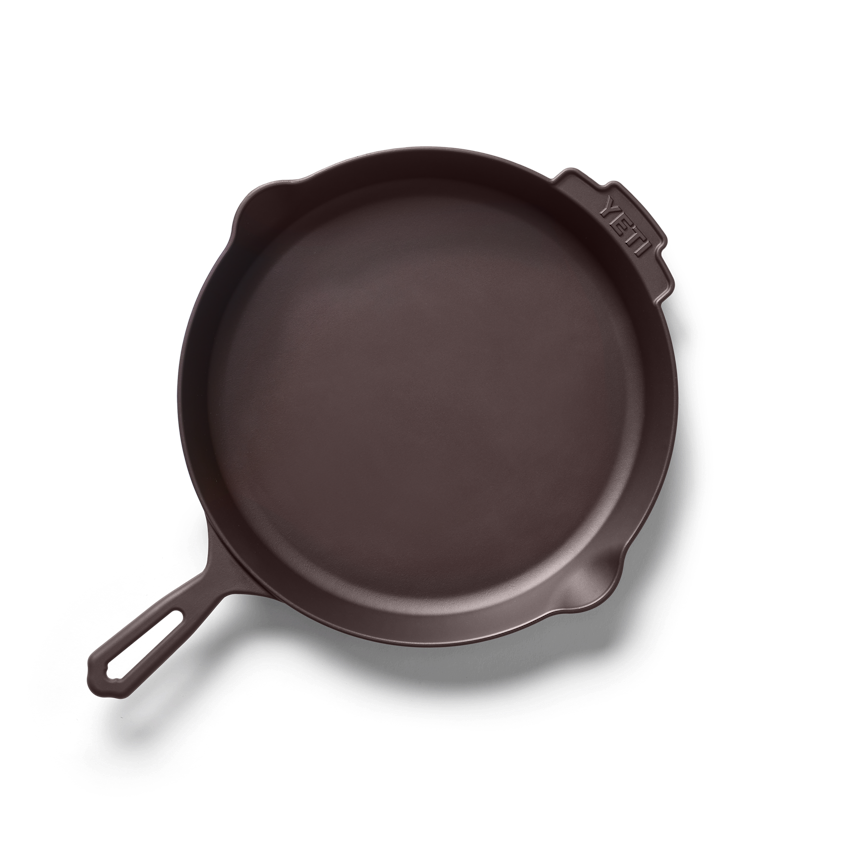
YETI 12" Cast Iron Skillet
Take on live fire with the last skillet you'll ever need. Bundle includes: 12" Skillet, Metal Ring Rag, Scraper Card, and Cotton Storage Bag. Shop now.www.yeti.com
View attachment 564480
I've read that but I didn't take it past 80 grit on the palm sander so it should have plenty of etching to adhere to. I also don't see how it would be any different than a mill finished skillet like a Yeti or Smithey.
It's a $5 skillet, I'll keep experimenting and see if I figure anything out. I'm wondering if I'm not cooking it hot enough at 450° in my oven.

